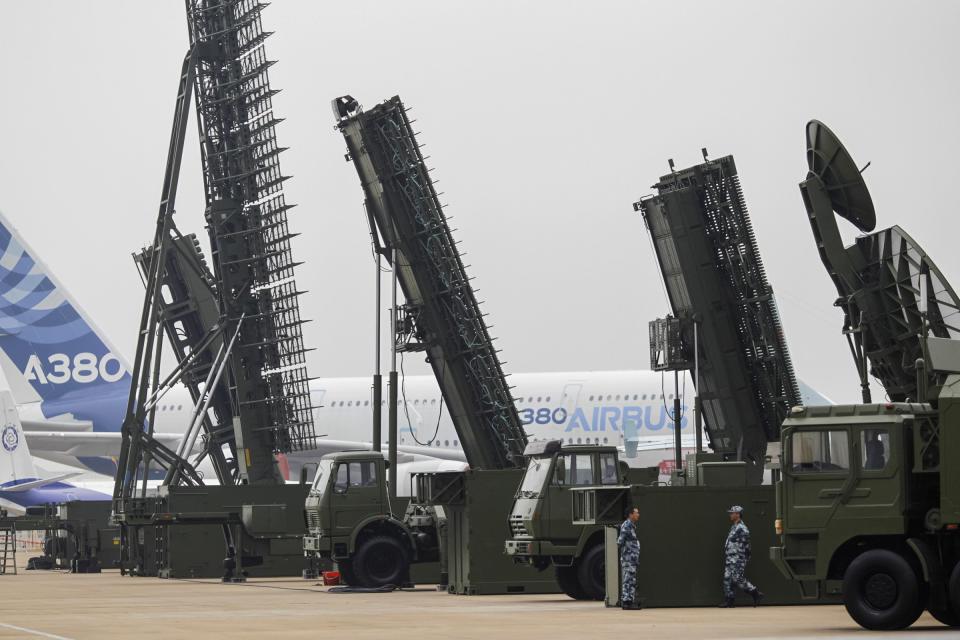China's new missile could threaten an arms war in the Pacific

Kevin Frayer/ Getty Images
China has a new generation of stealthy, supersonic anti-ship missiles, and the US is clearly worried about them. Former US rear admiral Eric McVadon described them as the "strategic equivalent of China’s acquiring nuclear weapons in 1964". He wasn’t exaggerating.
The missiles can evade US missile defenses and undermine the effectiveness of the carrier strike groups the US operates in the Western Pacific.
By deploying them, China could be changing the future military balance in Asia, pulling the centre of power away from Washington and its allies and towards Beijing. If the US can’t sustain its monopoly on the development of precision missile systems, it will struggle to project its current level of power in the western Pacific – and its forward forces and bases in the region will be increasingly vulnerable.
Such a shift, or even the perception of one, carries all sorts of risks. Deterrents might lose their deterrent force; military miscalculations might be made, potentially leading to inadvertent war. Then there’s the arms race factor. Precision strike munitions might soon start to proliferate across the region – Japan, for one, has recently expressed a keen interest in exploring the development of a long-range strike capability similar to the US’s Tomahawk cruise missile.
The missiles that threaten to shuffle the deck were first seen during China’s 2015 Victory Day Parade. The two anti-ship missile variants on display were the DF-21D, a medium-range ballistic missile dubbed the Carrier Killer, and the DF-26 – a long-range, nuclear-capable version.
The DF-26 is the first conventionally armed Chinese ballistic missile capable of reaching the Pacific US territory of Guam, and is thus known as the Guam Express (or Guam Killer). If paired with a nuclear warhead, it will be China’s first long-range nuclear precision missile capable of targeting vital US military assets in Asia.
These weapons allow China to both project its military power further and enhance its strategic deterrence – all without the political risks of large troop deployments, or the enormous costs of multiple aircraft carriers.

Alex Lee/Reuters
Off-balance
This slow-brewing arms race is quite different to the US-Soviet precision strike competition during the Cold War. This time around, domestic political considerations are front and centre: if the Chinese Communist Party wants to preserve its mandate, it has to prove its ability to defend China’s so-called core interests, among them the South China Sea.
But simply being able to show off this sort of military prowess perfectly fits China’s aspirations to become a great power. These assets can threaten US aircraft carriers, overwhelm its missile defenses and threaten its strategic hub in Asia. They also reinforce China’s already formidable military tool-kit designed to settle Beijing’s unresolved interests in the Taiwan Straits, and the increasingly militarized disputed islands in the South China Sea. Even untested, the missiles’ symbolic weight is enormous.
Still, there are many unknowns here. What would Chinese anti-ship missile launch protocols look like? How would the Chinese military use these weapons in regional pre-emptive strikes? Would they be used in single strikes, or multiple-salvo attacks? And do the missiles mean an emboldened China might behave more aggressively in future regional standoffs?
The US, meanwhile, is preparing to challenge China’s guided munitions by investing in new military systems of its own. This could generate highly escalatory "use-or-lose" dynamics: if China knew or believed that the US could destroy its missiles before they were fired, that could lower the threshold for their use in a future regional conflict.
What’s needed is a broad regional arms control framework, perhaps something analogous to the INF or START regimes that limited the US-Soviet Union arms race. Without one, this missile "salvo competition" will only speed up. The future of Washington’s credibility and durability in the western Pacific is at stake – and with it, the security of one of the world’s most heavily armed regions.
NOW WATCH: A pharmacologist explains marijuana's effect on your dreams
See Also:

 Yahoo News
Yahoo News 

